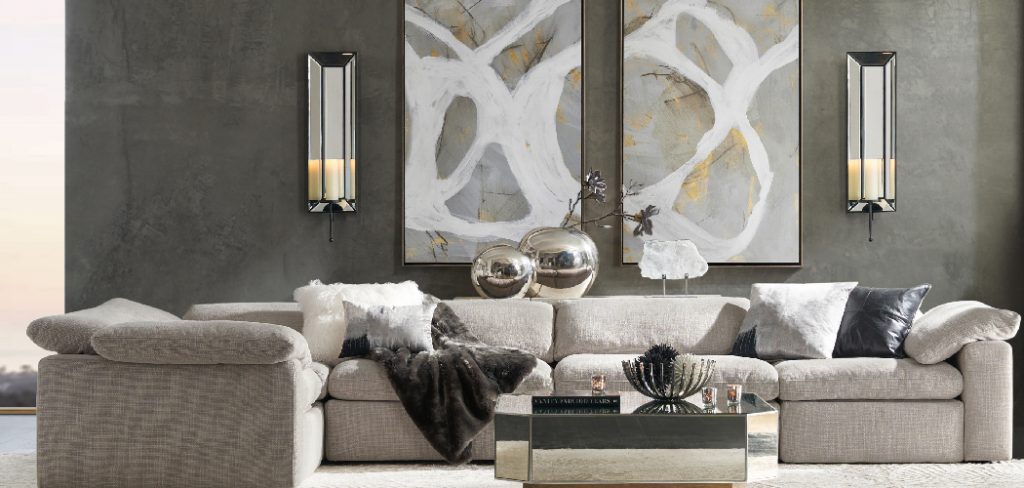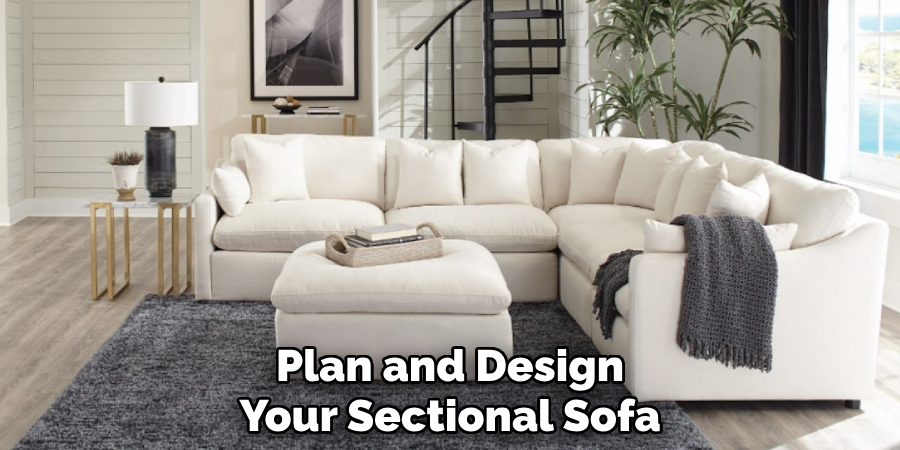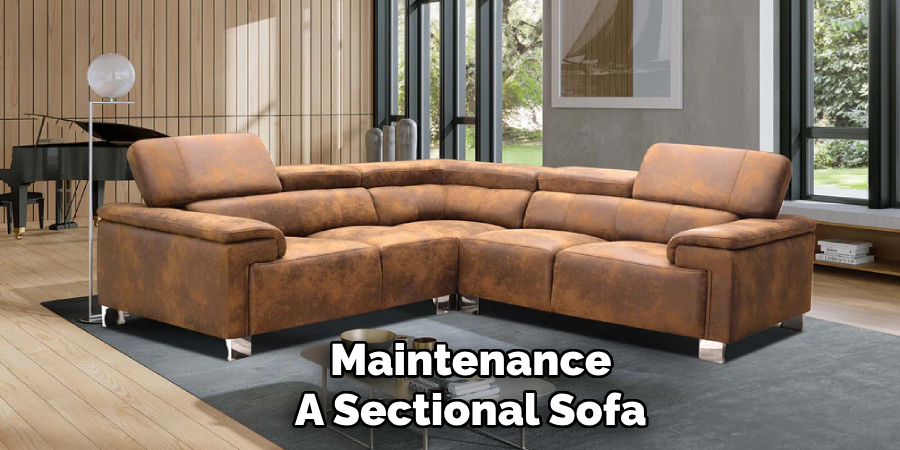A sectional sofa is a versatile and stylish piece of furniture that can transform any living space. Its modular design allows for customization, making it ideal for a variety of room layouts and seating needs. Whether you’re crafting a cozy spot for family movie nights or creating an elegant seating arrangement for entertaining guests, building your own sectional sofa offers a rewarding opportunity to tailor the design, materials, and size to perfectly suit your home.

This guide will walk you through the essential steps and tips for how to make a sectional sofa.
Benefits of Sectional Sofas
Sectional sofas are renowned for their flexibility and practicality, making them a popular choice for many homes. Their modular design allows you to configure the seating arrangement to fit any room shape, whether it’s a compact apartment or a spacious living area. They offer ample seating, making them perfect for hosting gatherings or providing a comfortable space for family relaxation. Additionally, sectional sofas often come with built-in features such as recliners, chaise lounges, or storage compartments, which add to their functionality.
With a variety of styles, colors, and materials available, sectional sofas can seamlessly blend with your decor while enhancing the aesthetic appeal of your space. Their durability and ability to grow with your needs make them a long-lasting and versatile investment in your home.
Planning Your Sectional Sofa Design
Before building your sectional sofa, it’s important to plan its design carefully to ensure it meets your specific needs and complements your space. Start by measuring the area where the sofa will be placed. Consider the dimensions of the room, including doorways, windows, and any other furniture, to determine how much space is available for the sectional. Decide on the type of configuration that will work best for your layout, such as L-shaped, U-shaped, or a smaller modular arrangement.
Next, think about the purpose of the sofa—are you looking for maximum seating for guests, a cozy family lounging spot, or added functionality like storage or a sleeper option? This will help guide your design choices. Choose materials that align with your lifestyle; for instance, durable, stain-resistant fabrics are ideal for homes with children or pets, while luxurious finishes like leather or velvet can add a touch of elegance. Finally, select a color palette and style that complements the existing decor of your space, ensuring your sectional sofa becomes a cohesive and eye-catching centerpiece in your home.
10 Methods How to Make a Sectional Sofa
1. Plan and Design Your Sectional Sofa
Before you begin constructing your sectional sofa, it’s essential to plan and design the layout. Consider the space available in your room and decide on the number of sections you want.

Sketch a rough design with dimensions to ensure the sofa will fit perfectly. This step will help you determine the materials needed and visualize the final product.
2. Choose the Right Materials
Selecting high-quality materials ensures the durability and comfort of your sectional sofa. Choose sturdy wood, such as plywood or hardwood, for the frame. For cushions, opt for high-density foam for support and longevity. Additionally, pick a durable upholstery fabric that matches your home’s aesthetic and withstands daily use.
3. Construct the Frame
The foundation of a sectional sofa is its frame, which must be strong and well-structured. Use your design measurements to cut wooden pieces for each section. Secure the frame using screws, nails, or wood glue, reinforcing the joints with brackets if necessary. Ensure the structure is stable before proceeding to the next step.
4. Attach the Seat Base and Backrest
Once the frame is built, install the seat base and backrest. Use plywood sheets for the seat support, securing them firmly to the frame. The backrest can be slightly angled for added comfort. Ensure both parts are aligned correctly to maintain symmetry in your sectional sofa.
5. Add Cushioning for Comfort
For a comfortable seating experience, add high-density foam cushions to the seat and backrest. Cut the foam to fit the frame dimensions and secure it with adhesive spray. Wrap the foam with a layer of batting to enhance softness and smooth out any rough edges.
6. Upholster the Sofa Sections

Choose a fabric that complements your interior décor and is easy to maintain. Cut the fabric according to your frame and cushion measurements, leaving extra material for tucking. Use a staple gun to attach the fabric securely to the wooden frame, ensuring a snug fit without wrinkles.
7. Assemble the Sectional Components
Since sectional sofas consist of multiple pieces, assembling them correctly is crucial. Attach connectors or brackets to the sections to keep them aligned and prevent shifting. Test the stability by sitting on different sections and making adjustments as needed.
8. Install Legs or Base Support
Adding legs or a sturdy base provides the sectional sofa with stability and elevation. Choose wooden or metal legs that complement the design and securely attach them to the frame. If using a base, ensure it is level and properly fastened.

9. Customize with Decorative Elements
Enhance the aesthetic appeal of your sectional sofa by adding decorative touches. Consider tufted cushions, patterned fabrics, or trim details. Throw pillows and blankets can also complement the overall design, making your sectional a focal point in the room.
10. Test and Maintain the Sofa
Before finalizing your project, test the sectional sofa for stability and comfort. Sit on each section and check for any creaks or misalignments. Regularly maintain your sofa by vacuuming, spot-cleaning stains, and tightening any loose connections to ensure longevity.
Maintenance and Upkeep
Maintaining your sectional sofa is essential to ensure its longevity and keep it looking its best. Start by establishing a regular cleaning routine. Vacuum the sofa weekly to remove dust, crumbs, and pet hair, paying special attention to crevices and seams. For fabric upholstery, use a gentle upholstery cleaner to tackle stains, and always follow the manufacturer’s care instructions. If your sectional is made of leather, clean it with a damp cloth and apply a leather conditioner periodically to prevent cracking and maintain its softness.
Rotate and fluff the cushions frequently to distribute wear evenly and maintain their shape. For sectional sofas with removable covers, wash them according to the care guidelines to keep the fabric fresh and vibrant. Check the frame, legs, and connectors periodically to ensure everything remains secure and sturdy. Tighten any loose screws and replace damaged components as needed.
Protect your sectional from direct sunlight to prevent fading, and consider using throws or slipcovers in high-traffic areas to reduce wear and tear. By being proactive with maintenance and care, your sectional sofa can remain a durable and stylish centerpiece in your home for years to come.

Troubleshooting Common Issues
Even with proper care and maintenance, sectional sofas may occasionally encounter issues. Here are some common problems and how to address them:
Loose or Wobbly Sections
If the sections of your sofa shift or feel unstable, check the connectors or brackets securing the components. Tighten any loose hardware or replace damaged pieces to ensure stability. Adding rubber pads underneath the legs can also help prevent movement on slippery floors.
Sagging Cushions
Over time, cushions may lose their firmness and begin to sag. To fix this, consider adding additional foam or batting to restore support. For removable cushions, flipping or rotating them regularly can also help extend their lifespan and maintain their shape.
Squeaky Frame
A squeaky frame is often caused by loose screws or joints. Inspect the frame and tighten any loose hardware. If the squeak persists, apply a small amount of lubricant to the affected area or insert wood shims to reinforce the frame.
Fabric Tears or Wear
Small tears or frayed edges in fabric upholstery can be repaired using a fabric patch or upholstery adhesive. For more severe damage, you may need to reupholster the affected section. To prevent further wear, use slipcovers or throws in heavily used areas.
Stains or Spills
Address spills and stains promptly to avoid permanent damage. Use a clean, dry cloth to blot the excess liquid and apply a suitable cleaner based on your sofa’s material. For stubborn stains, professional cleaning may be required to restore the upholstery.
Disconnected or Misaligned Sections
Over time, connectors between sofa sections might loosen or become misaligned. Realign the sections and reattach them securely. If the connector hardware is damaged, replace it with new components to maintain a seamless look.
Broken or Damaged Legs
A cracked or broken leg can compromise the sofa’s stability. Replace the damaged leg with a new one that matches the existing design. Ensure all legs are tightened properly to provide even support.
By addressing these problems promptly, you can keep your sectional sofa in excellent condition and enjoy its comfort and style for years to come. Regular inspections and timely repairs will prevent minor issues from becoming larger, costlier problems.
Conclusion
Building, maintaining, and troubleshooting a sectional sofa may seem like a daunting task, but with proper guidance, it can be a highly rewarding experience. By following the outlined steps, you can create a functional and stylish piece of furniture that perfectly suits your space and needs.
Regular maintenance and care will ensure your sectional remains comfortable and visually appealing for years to come. Thanks for reading, and we hope this has given you some inspiration on how to make a sectional sofa!
Huston Douthit is a distinguished figure in the world of furniture design, with a decade of expertise creating innovative and sustainable furniture solutions. His professional focus lies in merging traditional craftsmanship with modern manufacturing techniques, fostering designs that are both practical and environmentally conscious. As the author of Fruniturix, Huston delves into the art and science of furniture-making, inspiring artisans and industry professionals alike.
Education
- RMIT University (Melbourne, Australia)
Associate Degree in Design (Furniture)- Focus on sustainable design, industry-driven projects, and practical craftsmanship.
- Gained hands-on experience with traditional and digital manufacturing tools, such as CAD and CNC software.
- Nottingham Trent University (United Kingdom)
Bachelor’s in Furniture and Product Design (Honors)- Specialized in product design with a focus on blending creativity with production techniques.
- Participated in industry projects, working with companies like John Lewis and Vitsoe to gain real-world insights.
Publications and Impact
In Fruniturix, Huston shares his insights on furniture design processes, materials, and strategies for efficient production. His writing bridges the gap between artisan knowledge and modern industry needs, making it a must-read for both budding designers and seasoned professionals.


